Quick backstory.
I wasn’t always a content marketing nerd.
Years before I became a Content Strategist and Writer, I accepted every nickel-and-dime project I could get in a content mill.
My writing rates were scrimpy and so was my formulaic research process, which followed this pattern.
- Google a keyword
- Read the posts on page 1
- Use these posts as inspiration
- Copy and rewrite sections
- Submit the content
- Anticipate my clients will return with more projects.
Spoiler alert: most of them never did.
Why? The content was uninteresting, wasn’t different from other content, lacked authority, and was incapable of influencing readers.
That story is different today, but it’s not the same for others.
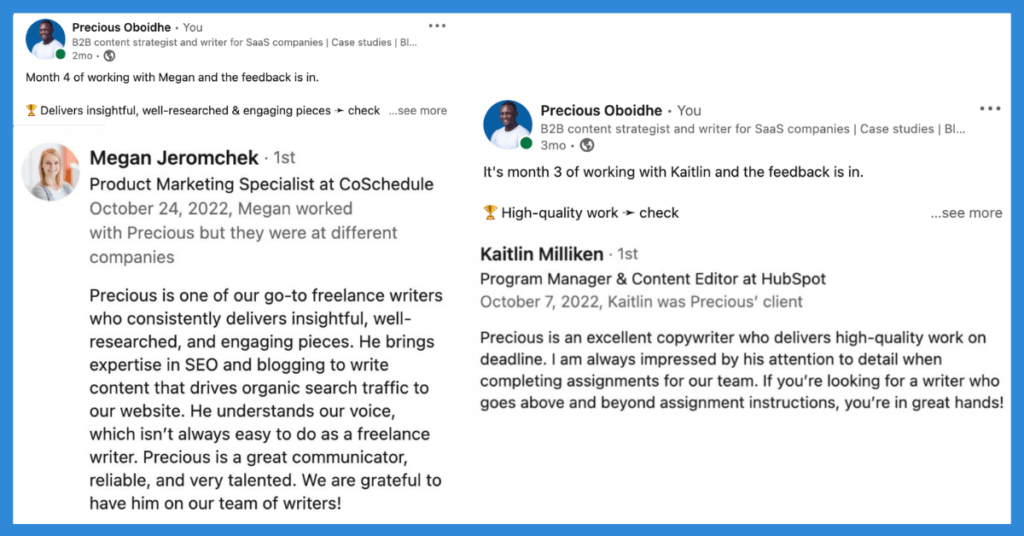
Most writers still create content that lacks authority and doesn’t inspire trust.
They don’t uncover relevant and recent data, find expert insights, and include the experiences of others in their content.
Put simply, they don’t do enough content research, so they end up writing content that sounds like everyone else.
In this guide, I’ll walk you through my content research process and share examples of how I action each step (where applicable).
“Don’t sound the same as everyone else. Treat your content as a conversation with your audience, let your (brand) personality shine through, and weave original stories into your content.”
Henneke Duistermaat
Founder of Enchanting Marketing
Source: The State of Content Marketing Report by Semrush
11 Content Research Tips to Make Your Posts Shine
Quality content research helps you unlock recent data and insights about your topic.
That doesn’t mean all old information is useless. Insights from some content remain timeless.
But how do you find them?
Here are 11 ways to uncover gems that’d make every content you write to stand out:
1. START WITH GOOGLE
Most writers begin their content research by Googling the topic.
This is especially important if you want to create content and attract traffic to it through search engine optimization.
There are two vital things you should do when researching a topic on Google:
- Skim the content of the search engine result page: This will give you ideas of what to include in your content outline.
- Identify the search intent: Search intent is the purpose of an online search. It suggests the content format you can create to target a keyword. It also informs you about the stage of a customer’s journey.
2. FIND RELEVANT RESEARCH REPORTS
Outdated stats in a post is one of my marketing pet peeves. If you dislike this as much as I do, you would love research reports.
Research reports provide fantastic statistics that are recent and relevant to a specific industry.
For instance, when I was writing a post about email testing tools, I couldn’t bring myself to use this overused, and I dare say ‘inaccurate’ stat—email generates $44 for every $1 spent.
Marketers have used this stat since forever.
But by searching for recent email marketing reports, I found the Litmus State of Email Report, saw the current email ROI, and used it for the post.
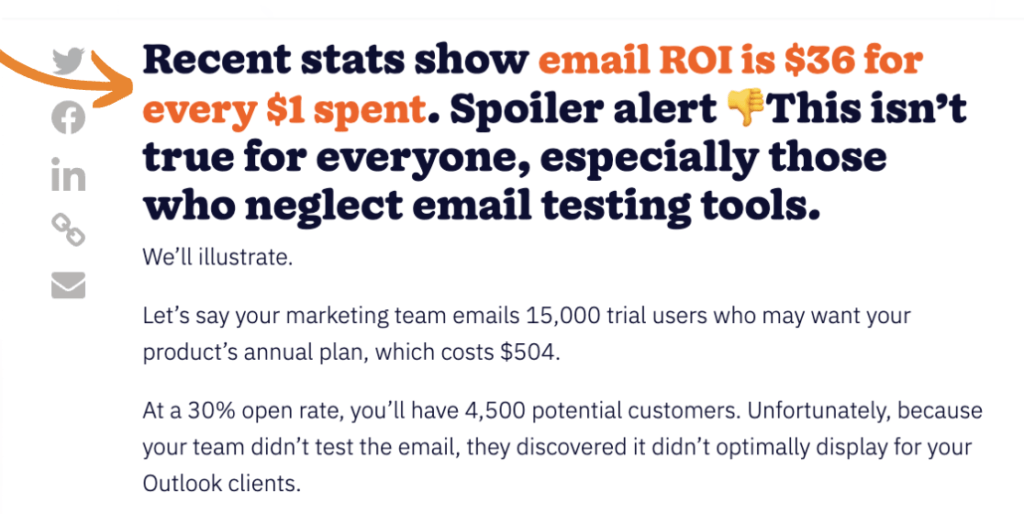
When finding research reports, use search strings like:
- State of [topic] [year]
- Example: State of email 2022
- [Topic] report [year]
- Example: Sales Trends Report 2022
- The Future of [Topic] [year]
- Example: The future of ecommerce report 2022
Most research reports are often in PDFs. So save them in cloud locations like Google Drive. This will help you organize the reports by industries if you are a generalist writer.
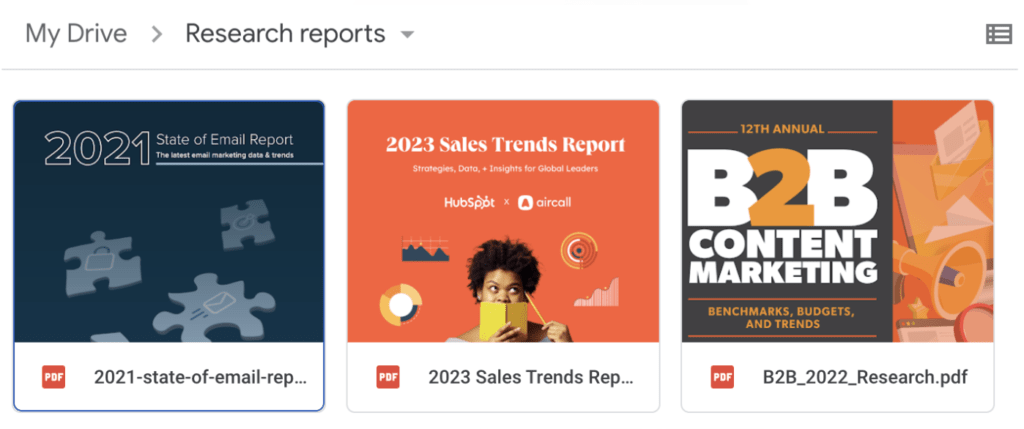
3. USE EXPERT INSIGHT AGGREGATORS
Getting quotes from industry experts gives content a journalistic feel and helps you tell an interesting story that’s rooted in first-hand experiences.
Quotes also improve the shareability of your content. When you mention experts in your content, they are likely to promote it because it further proves to their audience that they know their sh*t.
Expert insight aggregators like expertfile.com, Qwoted, Help a B2B Writer, HARO, Terkel (now Featured), and SourceBottle can help you get great quotes.
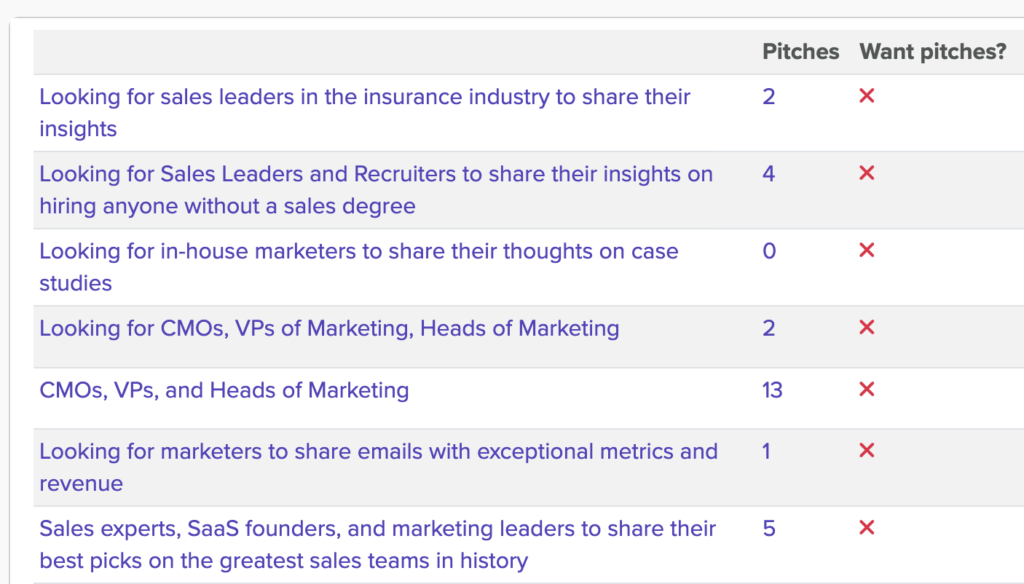
When making your request, be clear on the experts you want, write your questions, and state how you want the experts to respond.

Organizing responses using Google Forms can help you avoid clutter in your inbox. However, sites like Qwoted require experts to contribute their insights natively on their platform.

4. DIRECTLY SOURCE EXPERT QUOTES
Sometimes, the quotes from expert insight aggregators may be insufficient.
Here, you need to roll up your sleeves, find experts on social media or their website, and contact them.
Your message can read like this:
Hi [first name].
I’m writing about [topic] for [brand name].
I want to feature your expert take on a few questions and link to your [book, website, LinkedIn profile, etc].
Question: [Write the questions]
After creating your message, reach out to the experts where they are most active. This can be on LinkedIn or Twitter. Email them if they are unavailable on both platforms.
Caution: When using platforms like LinkedIn to find experts, limit the number of profiles you open. This prevents LinkedIn from flagging and possibly banning your account.
5. USE ADVANCED TWITTER SEARCH
Advanced Twitter Search is a powerful tool for filtering tweets by highly specific criteria.
I enjoy using this tool because it’s helpful for digging up unique quotes and examples that are buried in Twitter.
One of its most exciting use cases is the ability to find the most popular tweets about a topic.
Let’s say I’m writing a piece about data visualization and I need examples. I can search for “data visualization examples,” set a minimum number of retweets, and watch the magic unfold.

I used this process when writing a review of a powerful, but affordable content optimization tool and I found the tweet below. Can you guess the keyword I searched for? If you said “SERP analysis,” you’re right.
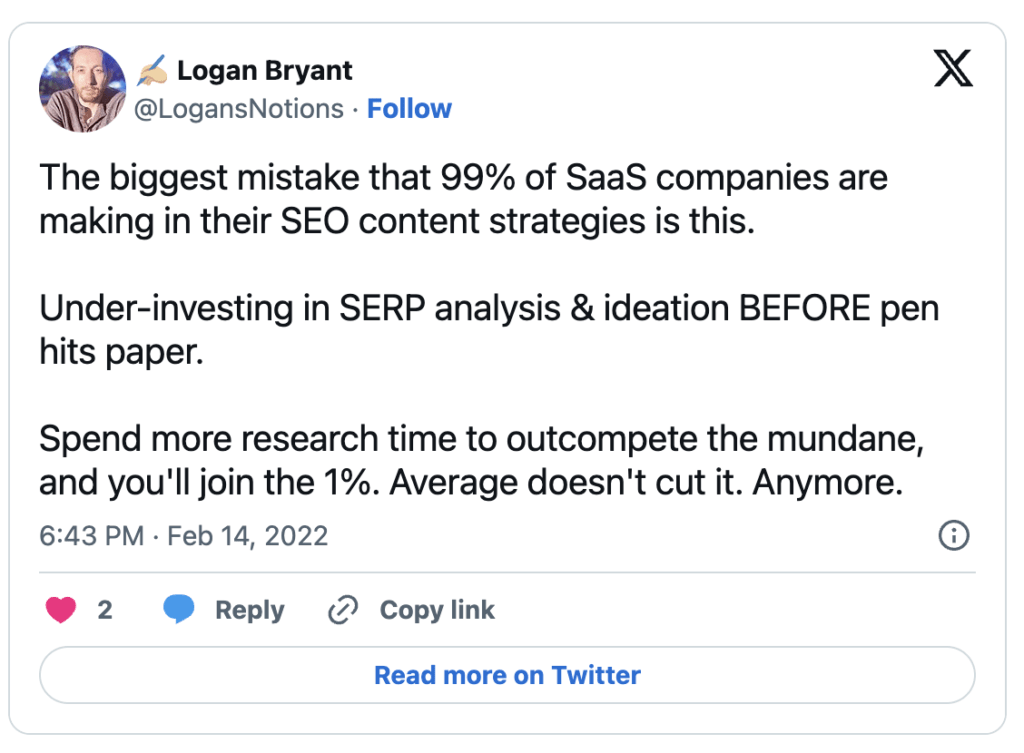
You can Advanced Twitter Search to find:
- Tweets mentioning a specific account
- Tweets from a particular person
- Tweets in a date range
- Tweets with only links
Note: Advanced Twitter Search can also find tweets with only images. For instance, if I want to find data visualization examples with only images, I’d have to add “filter images” to the search string. So the search string becomes “data visualization examples: min_retweets:100 filter:images.”
6. EXPLORE REDDIT
Reddit is an excellent forum to find unique and unfiltered insights from both seasoned professionals and newbies.
If you’re writing content that compares two software, Reddit will help you feel the pulse of what users think about both software.
What about when you’re writing about an unfamiliar topic? Reddit can also provide insights and help you understand the jargon of folks in an industry.
Let’s assume you want to write a post about “project charters” and you are clueless about the topic.
From the first step of the research process (Googling the topic), you know this topic is for project managers.
Next, you need to find popular subreddits where project managers hang out. Do this by Googling “The best/Top/Popular subreddits for project managers.”
Google returns r/projectmanagement.
Now you’ll go to this subreddit and search for “project charter.”
Using the “Sort” and “Time” filters, you will find discussions with the most upvotes, most comments, and those that are recent.

7. DIG INTO ONLINE COMMUNITIES
This content research method is gold for niche writers who specialize in writing content about an industry.
For instance, if you write about sales, what you need to do is join Slack groups containing salespeople.
When you need insights, you simply use the Slack search box to find what experts have shared previously.
As a marketer, I’m a member of the Superpath Slack group.
Assuming I want to write a post about B2B case studies, I can easily find insights by entering “case studies” into the search box in Slack.
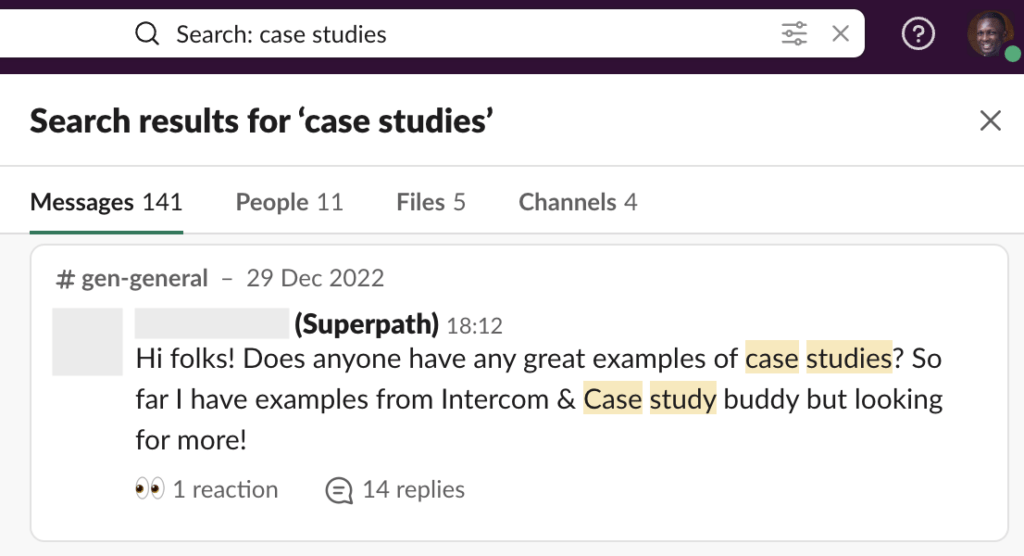
This content research method also brings you closer to the experts you need.
If the community has channels for content collaboration, you can share your questions there and many experts may respond.
8. KEEP YOUR EYES PEELED ON SOCIAL
Social media is a place where exceptional content dies within hours.
In fact, if you don’t interact with content you like, you only need to refresh your feed to see a fresh set of posts.
Unlike Twitter, which has an advanced search tool, LinkedIn and Facebook don’t have any.
But they have a ‘save’ feature you can use to keep posts you’d like to refer to.
On LinkedIn, you can save interesting posts by clicking the three dots in the top right corner and click save. You can also use Bardeen to save posts to Google Sheets or Notion.
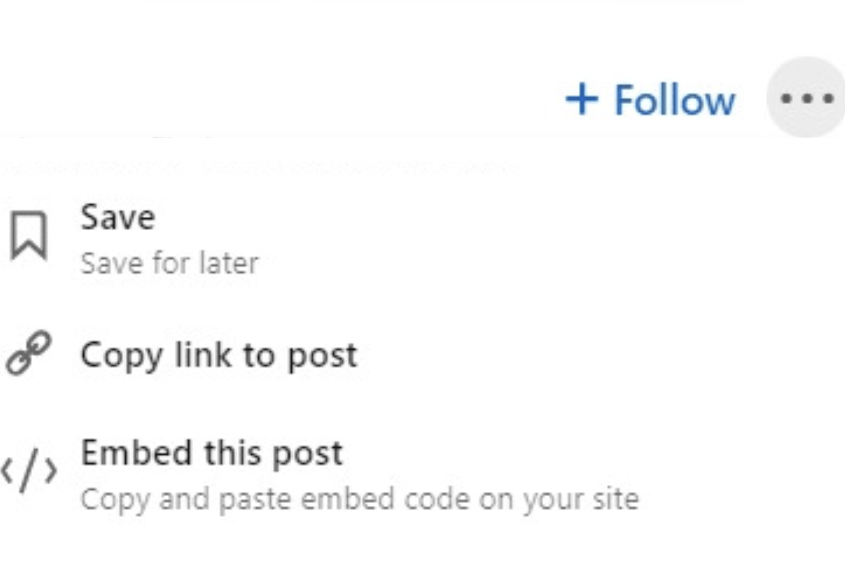
Facebook has an even better save feature that lets you categorize posts before saving them.
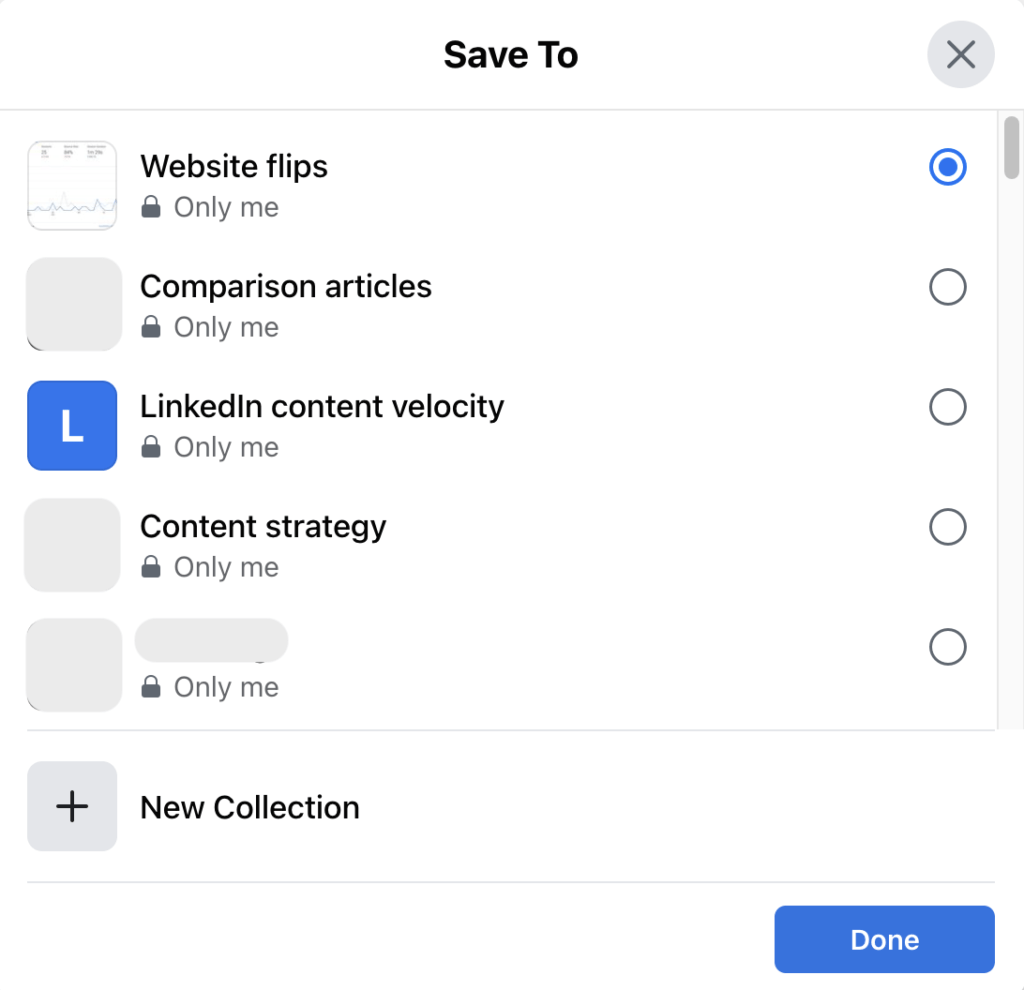
9. USE WAYBACK MACHINE
The Wayback Machine is an asset for finding historical details about a web page.
This tool comes in handy when you’re writing marketing case studies and when you want to tell a story about a page that has had multiple edits.
For example, in June 2022, I published a post on EngageBay that targets the term, “Is HubSpot CRM free.”
Since EngageBay offers a similar product like HubSpot, I decided to use a story to explain why HubSpot may not be a fit for small business owners, who are EngageBay’s ideal customers.
Using Wayback Machine, I searched for a page that supports the story I wanted to tell.
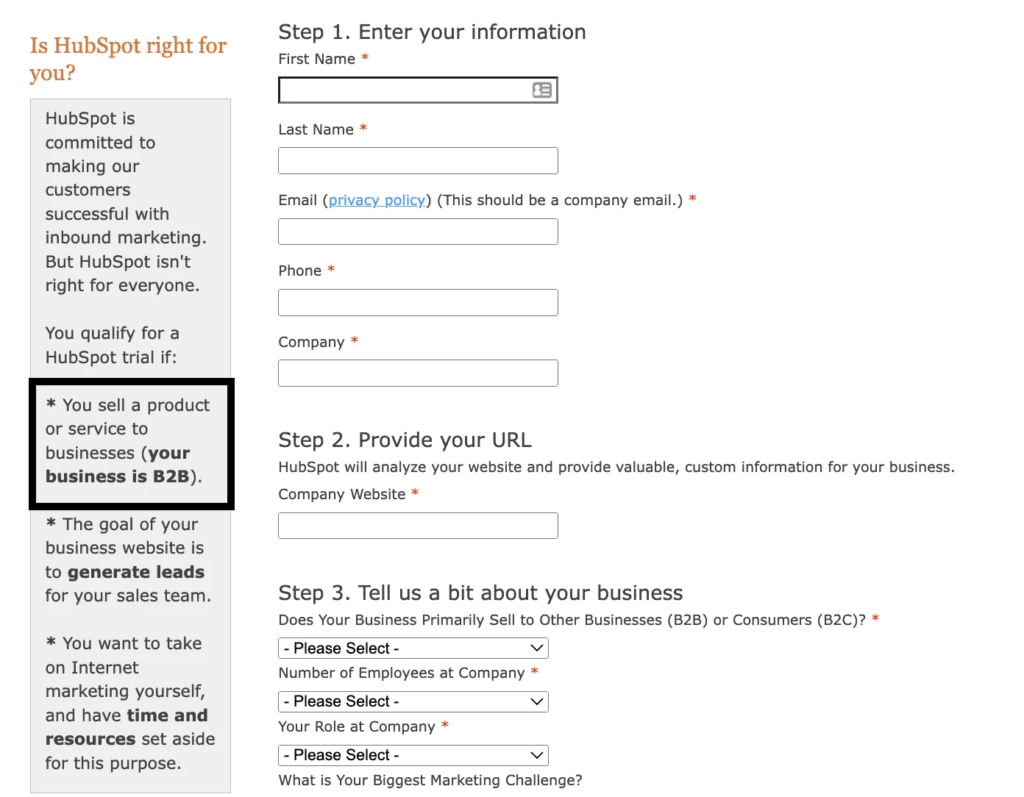
This not only differentiates the piece from others on Google, but it makes a solid case for the client’s product.
10. SUBSCRIBE TO INDUSTRY NEWSLETTERS
Companies take their newsletters seriously. They don’t email junk to their subscribers.
In fact, some newsletters contain exclusive information for subscribers. This makes newsletters an excellent resource for finding information that isn’t popular on the internet.
Just as you’d search Google for information on a topic, search your inbox as well.
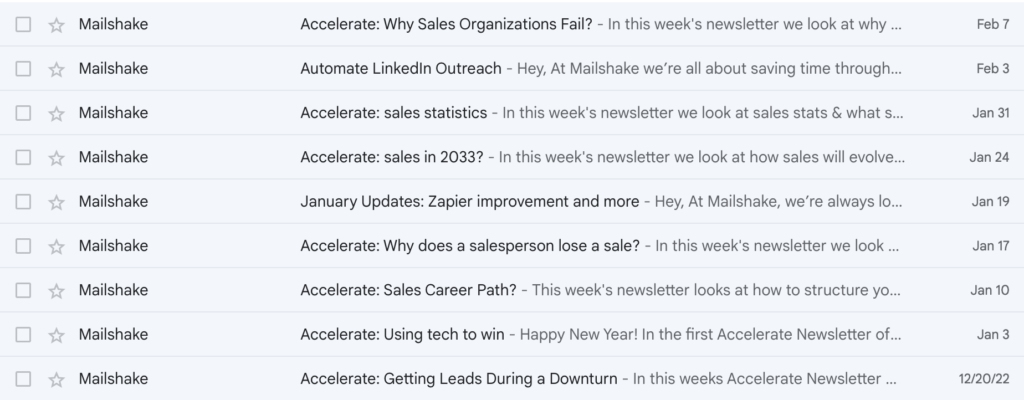
11. INTERVIEW INTERNAL SUBJECT MATTER EXPERTS (SMEs)
SMEs know their product better than anyone.
They would likely want to contribute to your content and make it the best piece ever. After all, excellent content has a better chance of getting them more customers.
So don’t think because SMEs may be busy you should create a piece yourself. If their input will make you create a solid piece, tell them and send your questions.
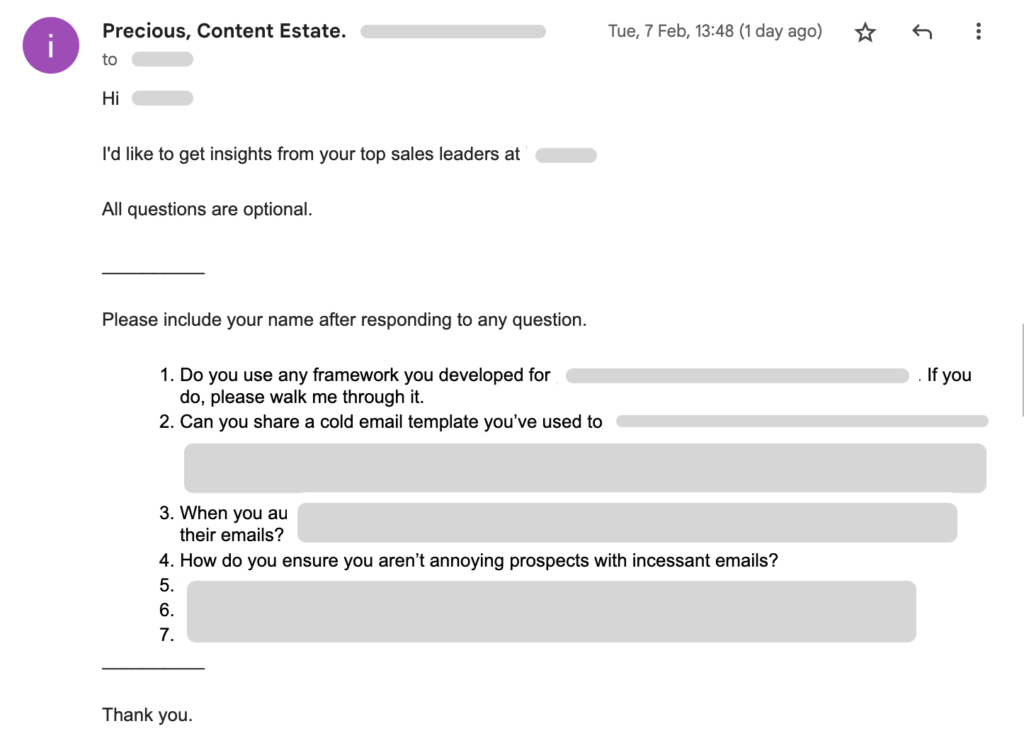
The questions you’d ask depends on a lot of factors. Some general questions for an SME should bother on:
- Availability of proprietary data
- How the SME achieves an outcome with [your topic]
- Mistakes that prevent people from achieving [X] outcome
- Tools the SME uses to get [X] outcome

LEVELING UP WITH QUALITY CONTENT RESEARCH
Besides excellent writing and soft skills, the ability to do quality research is something many clients want.
They love it because it makes their content different, helps them publish pieces with compelling arguments, build trust, and (hopefully) turn lurkers into customers.
This is also beneficial to you as a writer because you’ll publish content you would be proud to share.
So go out there, apply these tips and start creating content that’s not only worth promoting, but influences buying decisions.
Need a content strategist or writer who can help you win customers?
I help SaaS companies to create strategies that work and write A+ content for brands like yours. Get in touch.

Precious Oboidhe is a B2B SaaS content strategist and writer for hire. If you need help with strategizing and creating assets for the different stages of your content marketing funnel, get in touch.




Research is the first step towards writing a content piece. An exceptional one which influences the audience and make two people proud – yourself as a writer and your client (if any).
That’s correct, Roshan. Thank you for chiming in.
This is well detailed, insightful, and inspiring.
Thank you.
i love this content .It shows how to do extensive research before writing your content.
You’re welcome, Lukman.
To escape the trap of simply regurgitating content on Google, it helps to use most of these research methods in your arsenal for the best quotes & information about your topic. Thanks, Precious!
Sure. You’re welcome, Enoch.